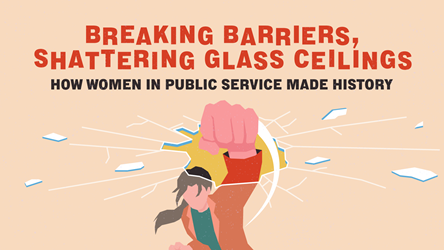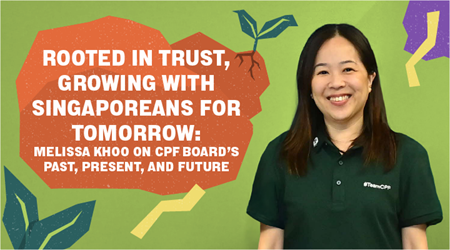Can We Nurture Kampung Spirit in Singapore?
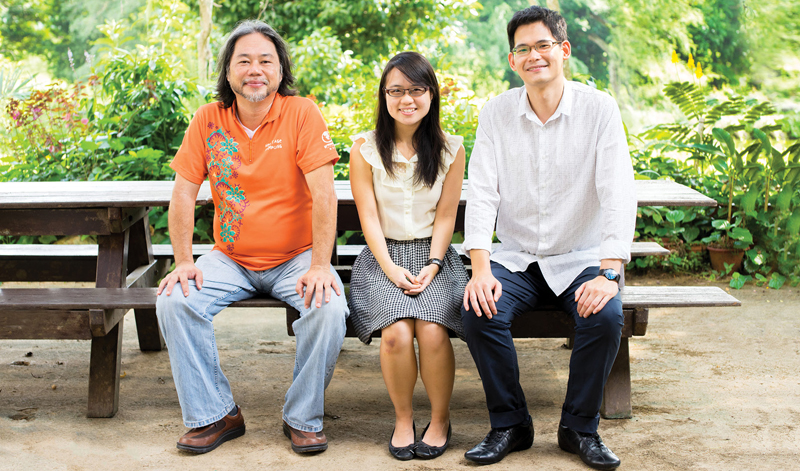
Facilitated by Challenge contributing editor Bridgette See

THE SPEAKERS (L to R):
Tay Lai Hock is Kampung Chief at the Ground-Up Initiative (GUI), a non-profit organisation that aims to nurture greater kampung spirit here though kampung activities (farming, woodworking and more).
Jean Ng is Deputy Director (Policy) at the Housing & Development Board (HDB). She focuses on research and methodologies to enhance community engagement and co-creation in HDB estates.
Dr Vincent Chua teaches sociology at the National University of Singapore, and has conducted research on social capital and neighbourliness in Singapore.
Bridgette See: Why is kampung spirit important?
Tay Lai Hock: I think there’s so much talk about it because we’re becoming very indifferent, even apathetic. What’s the antidote? Perhaps it is kampung spirit. We’ve seen thousands of people at GUI; more than 50% are young people. What surprised me was how often I hear this: "I didn’t know what kampung spirit was until I came here.” To them it is a very abstract concept, until they experience it in a real setting.
Jean Ng: Back then, there was a real survival need: people relied on kampung mates to put out fires [kampung houses were fire-prone]. Now you can just pick up the phone and call the police, HDB, town council, for anything. Maybe “kampung spirit” needs to be redefined, and adapted to better fit today’s context and for high-rise living. For instance, a housewife taking care of a neighbour's kid – that in itself is kampung spirit.
Vincent Chua: There’s also nostalgia; that we’ve lost something, and we're trying to recreate it. We may not know what the kampung spirit is, but there seems to be a longing to regain something rustic and pastoral.
TLH: Everyone wants to have a sense of comradeship. So how do we rebrand kampung spirit? How do we recreate it in an urban setting?
JN: The values have to stay regardless of time but how kampung spirit is manifested can be different.
TLH: A sustainable future requires retaining the best of the past and bringing in the best of the present. At GUI, we call it the 21st century kampung spirit.
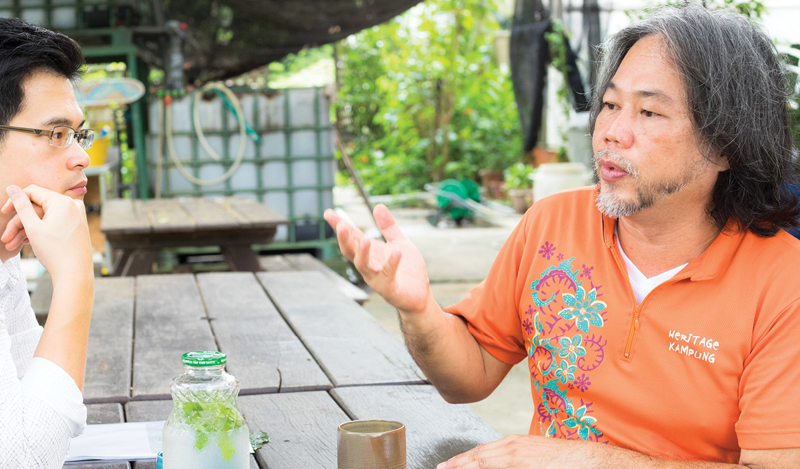
BR: What is that?
TLH: The 5Gs of GUI are: be gracious, green, giving, grounded and grateful. It means to be a “thinker, warrior and farmer”, to be hands-on and not mind getting hands dirty. Take this space at GUI: we’ve made a lot of things inconvenient so participants need to help one another. I could have easily pulled a tap, from there to here, but instead we have to cross 50m, with trolleys and barrels, to collect water. Everyone cleans here, we wash the toilets. Our society now relies on maids or foreign workers – we don’t come together to do cleaning. Yes, once in a while, we have 10,000 people come to collect rubbish but that’s once in a year.
VC: The land at GUI is so expansive. Can you replicate such a set-up in an HDB context?
TLH: I know of friends who have created a little kampung in their HDB. They beautify the corridor; the neighbours chipped in to create a garden; they hand their keys to each other. I think we already have that, and we need to talk more about such positive stories.
BR: How is the HDB trying to create kampung spirit? I understand there are two prototypes in Tampines.
JN: They are a social linkway and a neighbourhood incubator. People use the covered linkways the most, but some don’t even say hi when they meet neighbours. So the idea is, if we attach social functions [e.g., more seats, community gardens and exhibits or murals] along the way, hopefully people will check out the activities and have conversations. The incubator is a hub with flexible spaces and furniture for residents to hold workshops or activities.
We asked residents: “How do you think we can use spaces next to the linkways and void decks to create community spirit?” So the public engagement is already done and we have put together some design ideas based on the residents’ contributions. Post-construction, we’re thinking of using video analytics to see if there is more interaction along the linkways, and our surveys will assess how residents’ sense of community and ownership has changed after being part of such a participatory project.
TLH: The government goes to such lengths to bring back the kampung spirit. Isn’t it a bit sad? How did we come to this stage?
VC: People tend to think, “If I need help, I can call my friends and family, the smartphone is there.” In fact, to not disturb your neighbour is considered being a good neighbour – you value their privacy. Also, there are amenities all around. We don’t have to go to our neighbour to borrow a cup of sugar when we can get it downstairs. There is a politeness principle at work.
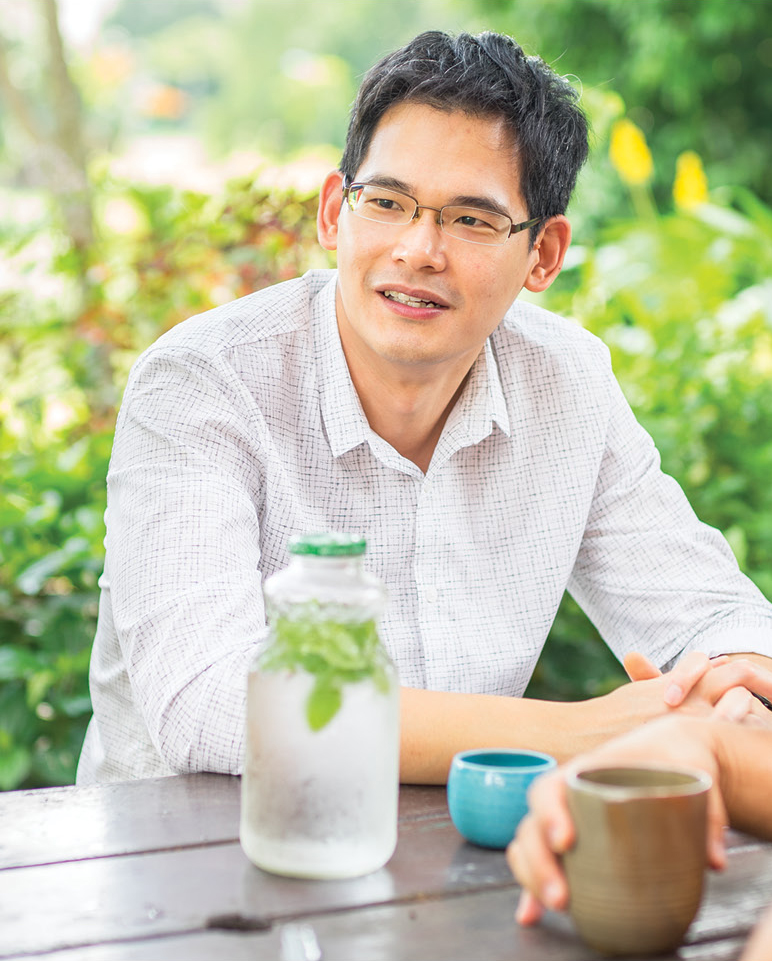

BR: I didn’t interact with my neighbours when I was single. Now as a mother, I do reach out to them.
VC: (nods) People with children and the elderly are more likely to be neighbourly. But based on research data, neighbours only comprise 5.3% of our networks; friends make up 35% and family, about 50%.
TLH: There’s a Chinese saying, “Neighbours are better than distant relatives.”
VC: Interestingly, we found that acting neighbourly increases your sense of belonging to the neighbourhood, but it doesn’t stop there. What starts off at the neighbourhood level becomes something bigger – a sense of belonging to Singapore.
TLH: (nods) One of my volunteers said it was GUI that made her proud of Singapore.
BR: The HDB now wants to create vertical kampungs like Kampung Admiralty in Woodlands.
VC: We’ve always had vertical communities, since we started building HDBs. But “vertical kampung” suggests something different – more greenery, I assume, being infused with everyday living, multi-generational arrangements, and amenities and other provisions all in the same place.
BR: But isn’t that just physical design? What if the people living in those flats have no interest in being part of the community?
TLH: When I was young, I lived in a two-room flat with a common corridor… Nowadays, our flats are not designed for neighbours to meet. So the design plays a part.
JN: Yes, you can have the designs in place, but eventually it is about how you get people together and feel they are part of a community. That relies a lot on programmes. But I think as the government, we shouldn’t be doing too much. We’ve seen in overseas cases that when the government is too strong, the community is actually weaker.
VC: But I would also say that the government has the resources to provide the initial outlay, after which you let go at some point.
JN: Yes. What we’ve been doing so far is to provide seed funding and the infrastructure. The question is, when do we let go? We’ve had cases where we provided a community garden upon residents’ request. After two, three years, participants drop out and the garden isn’t well kept. When the community then complains, the town council has to remove it. It’s a culture thing – it has to get into people that they have to play a part to maintain and use the spaces responsibly.
VC: Lai Hock, what are your thoughts on Kampung Admiralty? Will it work?
TLH: You need a kampung chief, a person who looks at the bigger picture, because you can’t rely on people to self-organise. If Kampung Admiralty stays in its present form, then it remains very hardware, very facility-driven. At GUI, we have a daily flagship activity called Balik Kampung [“going home” in Malay]. So if Kampung Admiralty has an activity that brings everybody together weekly, that could help. But hopefully it doesn’t come from the government!
JN: Hopefully too!
TLH: In order for vertical kampungs to work, you need someone to step up.
JN: We need more Lai Hocks. (laughs)

BR: Lai Hock, have you ever thought about what would happen when you retire?
TLH: All the time. People always ask, “Can what you’re doing apply to HDB?” I say, “Can.” My goal is to nurture many leaders so right now, the next stage is projects (beyond GUI) in the Yishun area. Through these, many young people will realise that in order to connect with others more deeply, you have to spend time on the ground and speak the same language, like Hokkien.
VC: How do we balance our busy lives with kampung spirit?
TLH: I started GUI because I wanted to put our youths in different situations, to challenge them to be entrepreneurial. GUI has shown that the kampung spirit can be innovative. A New York professor was intrigued by what we have done and our product (the iBAM, a mobile speaker made of bamboo) was featured on CNET.com. My goal is to have kampung spirit to make Singapore liveable, progressive, competitive, yet compassionate.
JN: How would we know when the level of kampung spirit is good enough or there’s more to be done?
TLH: I thought the recent passing of Mr Lee Kuan Yew showed the best of Singapore in many ways. People were queuing up and at the funeral, the moment the coffin passed by, everyone shut their umbrellas so that more people could come to the front. We need more national or district-level focal points like this one.
JN: We need that purpose, that driving force.
TLH: Why do people in GUI have more kampung spirit? Because we have a common vision to build this Kampung Kampus. You need shared joy and shared chores but also shared grief and discomfort. You don’t build a relationship with only the fun things.
VC: What if you have all of these but no land to work on? The hands-on element seems quite important here.
TLH: The Chinese idiom 钟灵毓秀 means a place that is endowed with the spirit of nature will produce men and women of fine character and grace. When I look at our built environment, Singapore has a lot more greenery but why are our people still like that? It is because our greenery is just a backdrop; you cannot participate in it. When you’ve not been a direct participant in that green process, you’re just an audience, but at GUI, you’re a participant.
- POSTED ON
Jun 30, 2015
- TEXT BY
Bridgette See
- PHOTOS BY
catspace





